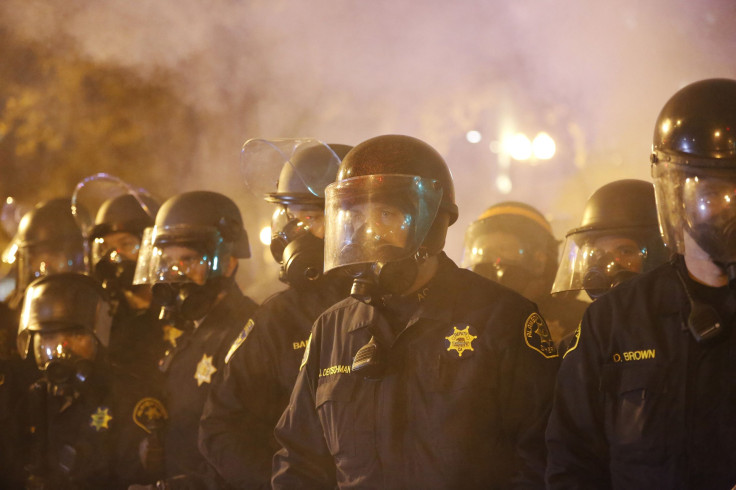Police Argue Military Equipment Makes Them Safer, No Matter Cost To Community Relations

U.S. President Obama announced Monday that the federal government will no longer provide local police agencies with certain military equipment. But police on the street are nervous that the change will make them less safe even if researchers say armored vehicles and high-caliber weapons serve no legitimate policing purpose.
The White House announced that, effective immediately, armored vehicles, grenade launchers and bayonets will no longer be transferred from federal to local agencies. Departments that wish to obtain explosives, riot gear and other intimidating equipment will first need to prove they will be used responsibly. The change comes after months of tension between police and communities like Ferguson, Missouri, where police responded to protests with armored vehicles and automatic rifles.
Despite criticism that the police reaction only incited protesters in Ferguson and elsewhere, military equipment is primarily used to keep officers safe, according to Rich Roberts, spokesman for the International Union of Police Associations. He cited the recent brawl between rival motorcycle gangs in Waco, Texas, in which nine bikers were fatally shot and 150 arrested as evidence of the need for the heavy-duty equipment. No police officers were reported injured in that incident.
“The police absolutely need armored vehicles, primarily to protect officers during standoffs and periods of intense violence,” Roberts said. He also stressed the need for proper training procedures and department budgets that can afford to keep individual officers on the street. “For example, I think the ban on camouflage uniforms is silly,” he said. “If a department can save money by obtaining camouflage uniforms, then so what?”
The problem for researchers, though, is that much of the desired military equipment costs hundreds of thousands of taxpayer dollars and is often only used for symbolic purposes. Campus police, for instance, often arrive in mine-resistant armored vehicles at university protests, creating a sense of unease and making the department “look like an invading force,” said Mary Anne Franks, an associate professor of law at the University of Miami.
“There's a general sense that many law enforcement officers now see themselves as a soldier force more than a community force,” she said, adding that some police hoping to obtain military equipment will have a negative reaction to the Obama administration's initiative because they feel they need it for their own protection. “Probably the strongest argument for having this is an active shooter situation. Having a mine-resistant vehicle in that situation can be useful, but it's a bit of an unusual argument to justify having this equipment around all the time because our research has shown that law enforcement will show up and use it all the time even when it doesn't call for it.”
Police can still acquire the equipment Obama's order prohibits by paying for it on their own. Before the terrorist attacks on Sept. 11 created a surge in domestic police spending, experts said, chiefs would publicly ask the community to pay for a potentially controversial vehicle or weapon, explaining why it was necessary and what it would be used for.
"The problem is that they perpetuate a culture of militarization,” Peter Kraska, chair of the Graduate School of Justice Studies at Eastern Kentucky University, said of armored vehicles and grenade launchers. “Equipment sits in a boneyard until someone has the bright idea to have the SWAT team to show up at a community meeting on race relations. What trumps sensibility is the reigning logic in the police institution, which is caution at all costs and safety for the officers first. And it's very hard to say anything in terms of 'They should be less safe.'”
© Copyright IBTimes 2024. All rights reserved.





















